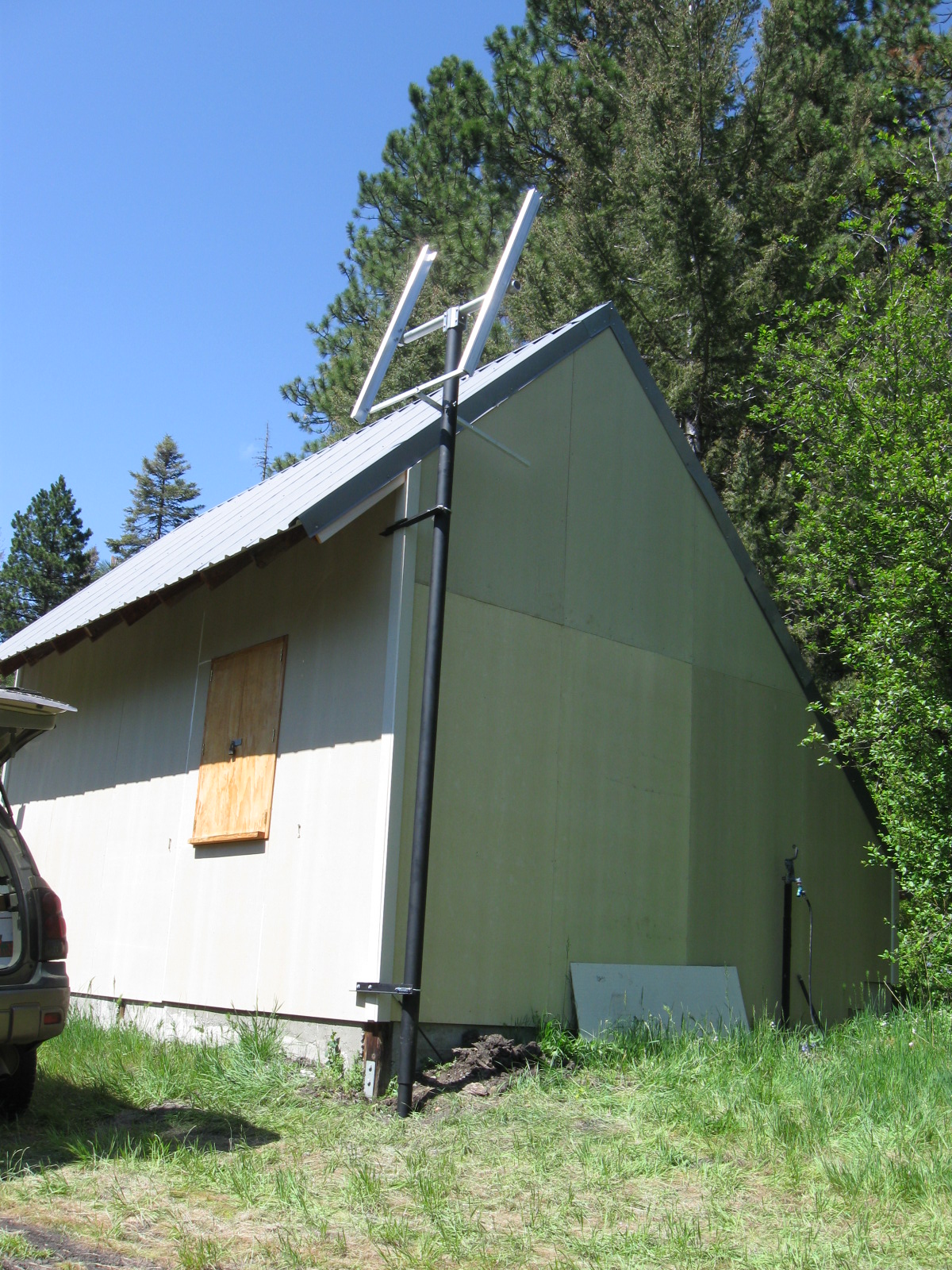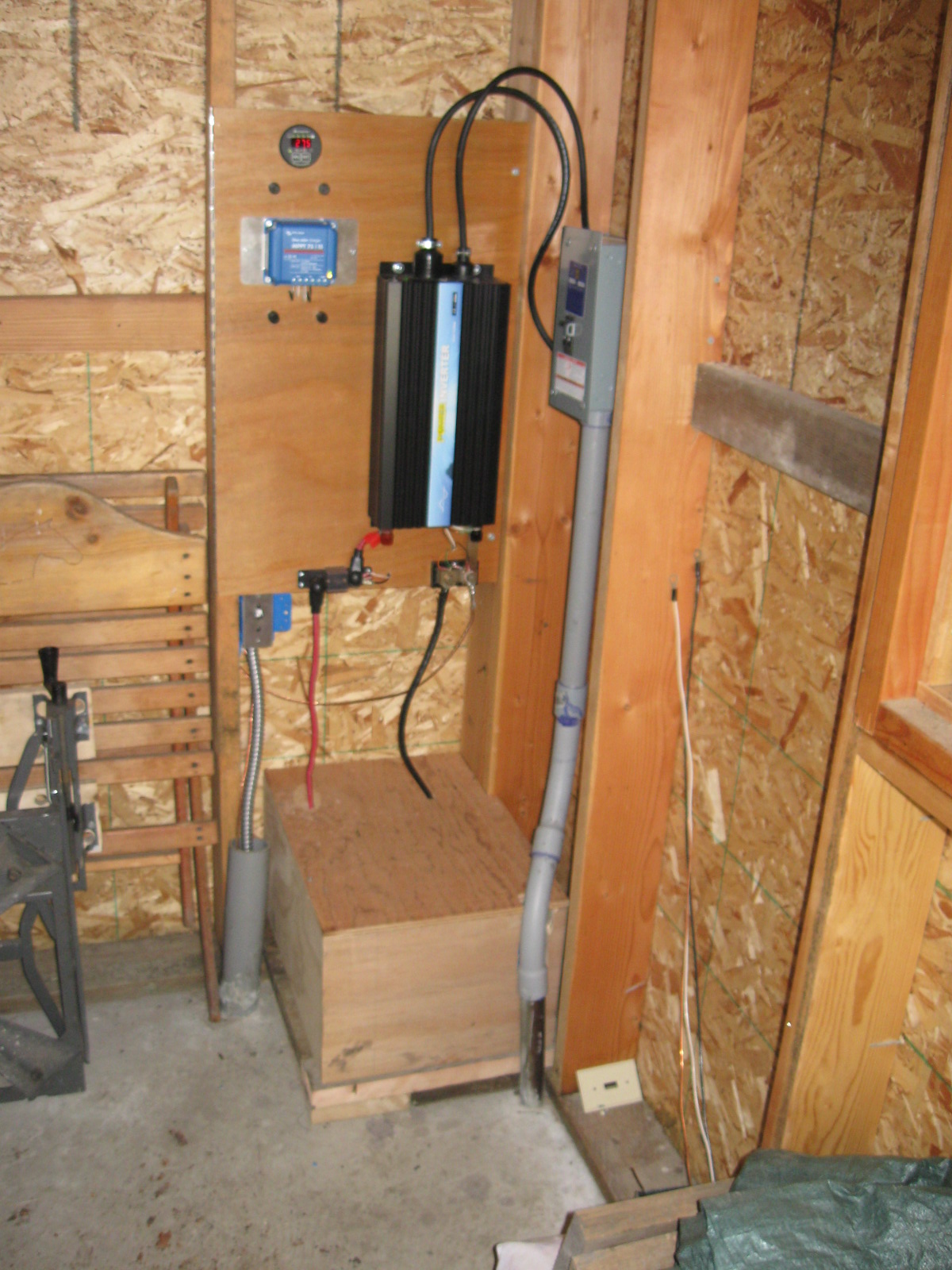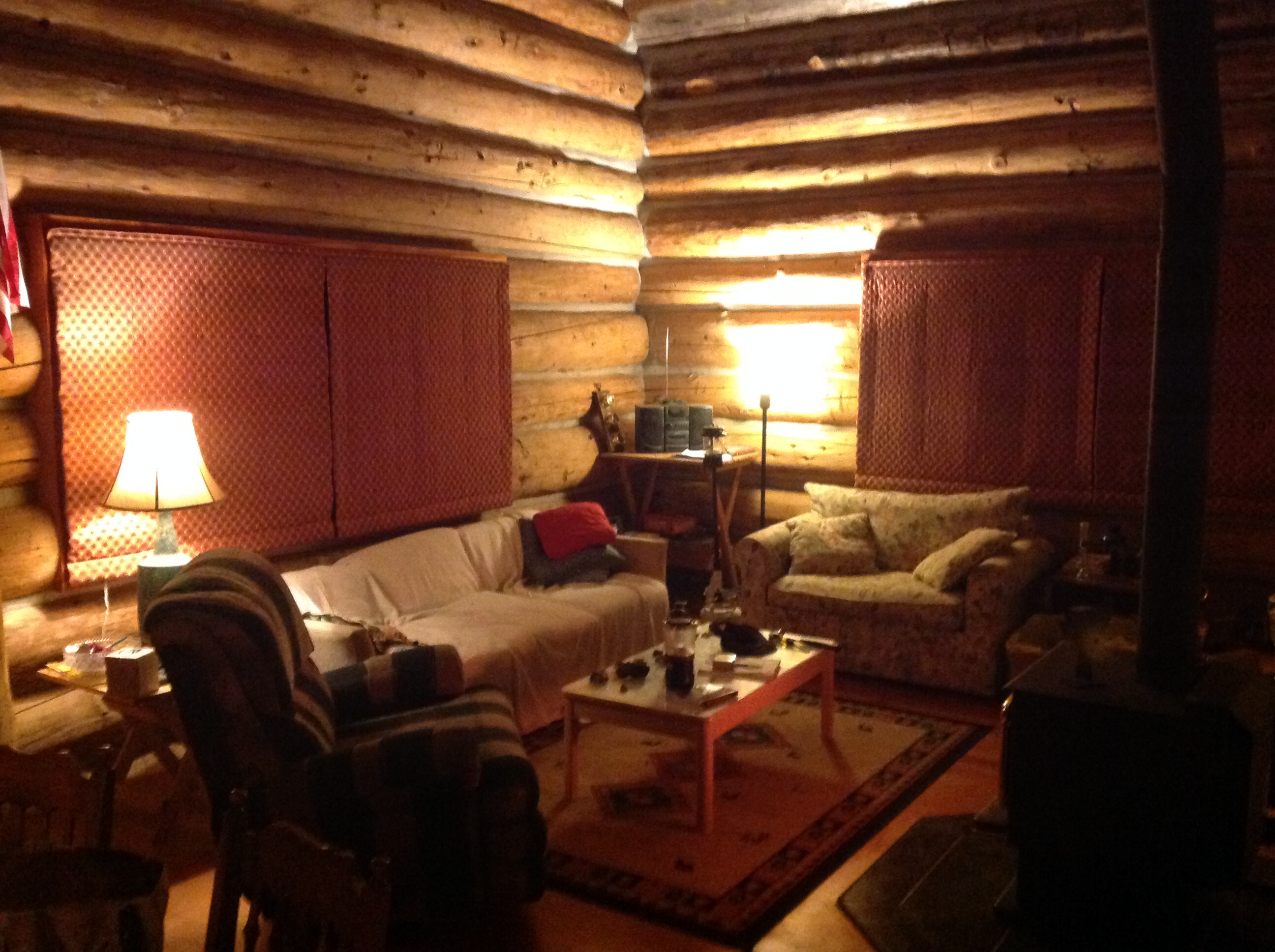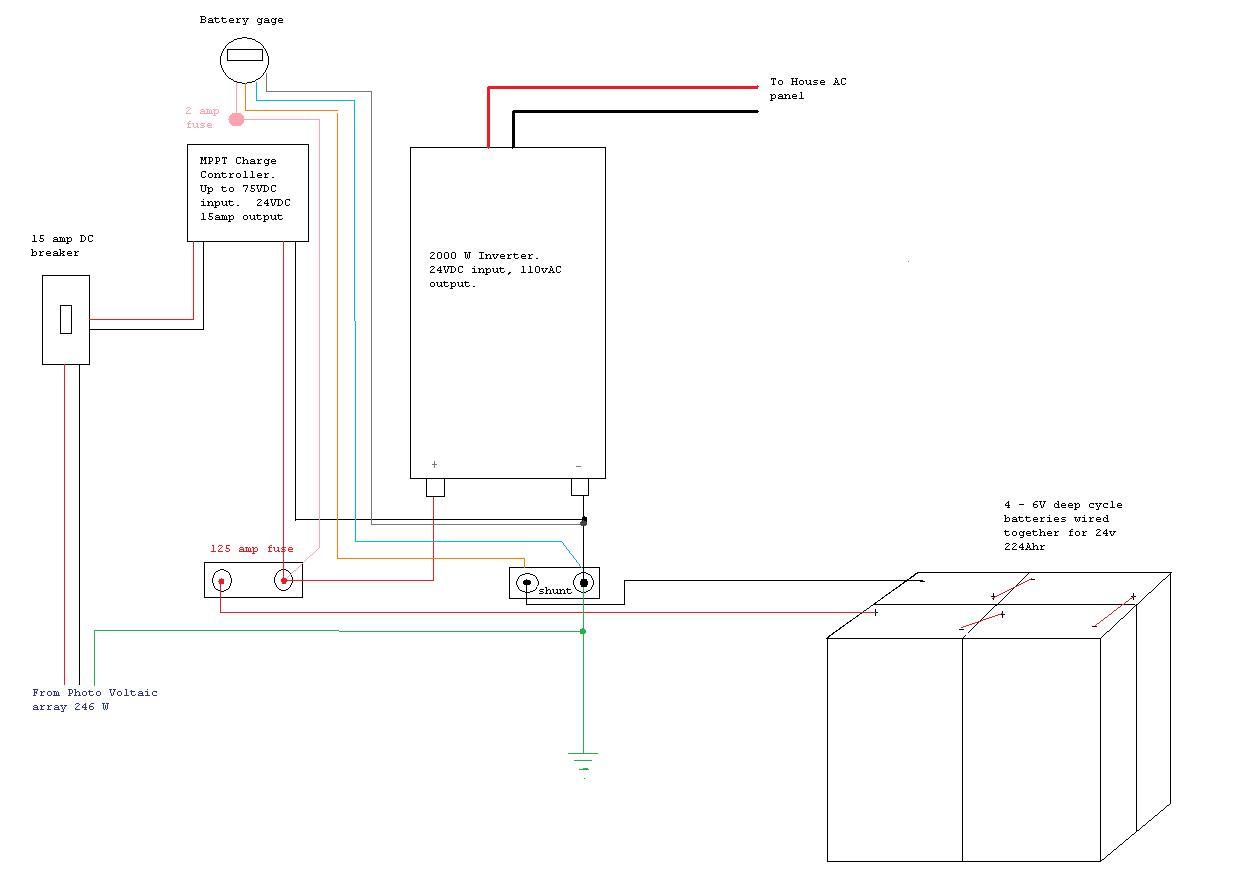The feds made me wire the cabin even though I didn't have a source for power. So I thought I'd set myself up with a little solar power. The problems with this are several. First, I'm looking south down a narrow canyon so my winter time sun period drops to about 3 hours a day at the darkest time of the year. But, I don't visit that often at that time so the system would have a long time to recover.
 The next issue
was where and how to mount the solar panels. The garage was a better place
for sunlight and it also affords me a place to put all the electronics that I
will need. I trenched some conduit over a couple
of years earlier and ran wires from my electrical box to the garage. They
have just been waiting for me to make something out of them.
The next issue
was where and how to mount the solar panels. The garage was a better place
for sunlight and it also affords me a place to put all the electronics that I
will need. I trenched some conduit over a couple
of years earlier and ran wires from my electrical box to the garage. They
have just been waiting for me to make something out of them.
This mount came with the solar panels I bought (more about them later). It was designed to fit onto a 3" pipe. I mounted it over a smaller pipe at the base so I can turn it with a minimum amount of bother to face exactly south I also set it up to be able to adjust the angle with a single arm at the bottom of the mount. Turns out you can increase you're solar production quite a bit by adjusting the angle of the panels 4 times per year.
I found the logic for my calculations at http://www.solarpaneltilt.com
February 27th, the panels should be adjusted to the spring/fall angle of 44.7 deg.
April 20th, the panels should be adjusted to the summer angle of 18.98 deg.
August 22nd, the panels should be adjusted to the spring fall angle again.
October 13th, the panels should be adjusted to the winter angle of 71.48 deg.
The winter angle is the one displayed in the picture. I have to climb a ladder to make the adjustment but I predrilled three holes in the arm so I don't have to measure the angles each time. I ran the wires down inside the pipe and then underground to the garage.

I didn't realize how awkward it might be to raise these big panels up to the top of the pole. But with an improvised crane, it all went smoothly. I wired them in series so I could operate a 24v system.
These panels (Sharp 123 watt) were purchased back in 2007 under the mistaken impression that they were a real steal. Little did I realize how much the price of solar panels would drop in the past couple of years. So I am embarrassed to say I paid about 4x what I should have for these panels. But at least they work.
In general there is a relationship between the maximum watts generated by your panel array and the size of your battery pack in watt hours. I'm told it should be 20:1 or 20 watt hours of battery storage for each watt of generating power and that's about what I ended up with. But I'm sure that if you were depending on this for normal daily usage that you'd want more watts so the system would recover faster.

I got these components from various places. The inverter was from Amazon. A cheap Chinese manufactured item that came with virtually no documentation. It does the job but you get what you pay for I think.
The round E-meter was actually invented by my genius brother Steven Kahle. I can use it to monitor my battery condition with minimal power draw.
This Blue Solar MPPT style charge controller will help me maximize my charging potential.
Inside the battery box, I have 4 Full River 6 volt AGM 224 Amp hour deep cycle batteries wired together to form a 24v battery pack rated at 5.376 kWh.
In actual use one should never pull a battery pack down past 50% so I have a little over 2.6 kWh of actual power to use. (That's 2, 50 watt light bulbs left on for 26 hours) But that would require about 10+ hours of full sunlight to recover (about 3.5 days worth in the dead of winter).
Other system design considerations: I don't have a well pump but, I'm told, for those that do, it is best to get a DC well pump and run it directly off the batteries rather than through the inverter. That way, the power lost through the inverter doesn't affect the well pump and the power surge caused by the pump starting up against a load doesn't swamp your inverter. The only other consideration there is that DC power doesn't transmit well over long distances so your batteries need to be relatively close to the well.

So the first time I turned the lights on, it turned out I had wired a few things backwards. Ah me, live and learn. I guess I thought that the switches would never get used so I wasn't as careful as I shoulda been. Anyway, it's all sorted out now.

This is my wiring diagram.
If these pages have interested anyone in log structures, feel free to
contact me or
The Log Home Builders Association of North America to learn more about the process.